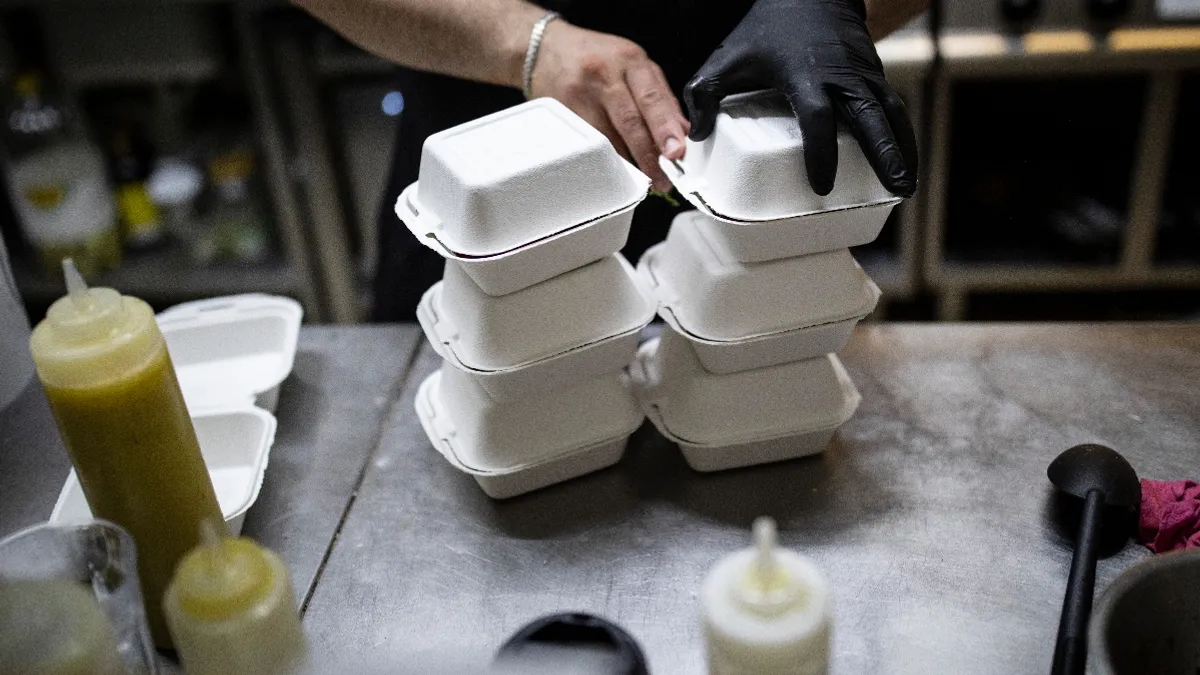The following is a guest post by Chris Adams, vice president of strategy at Oracle Food and Beverage.
As our industry continues to evolve, restaurateurs are rethinking, remodeling and reevaluating their revenue streams. Ghost kitchens, virtual brands and cloud kitchens represent a continued trend toward diversification and the digital evolution of the guest experience.
Restaurateurs, real estate developers and even grocers continue to test out new ways to best serve hungry consumers through virtual brands and learn how to best utilize brick-and-mortar locations that have a reduced amount of foot traffic. Going all-in on virtual brands certainly reduces the cost of front-of-house staffing and dining space, while also presenting restaurant operators with the flexibility to test new concepts, reach new customers and create new sales opportunities — all while minimizing risk.
Consumer demand for delivery surged during the COVID-19 lockdown, with 88% of U.S. consumers ordering takeout, and Oracle Food and Beverage's restaurant trends research suggests that takeout will remain in high demand. This presents new challenges for restaurateurs that need to strike a balance between steady demand for off-premises dining and a rapid increase in consumer appetite to dine at a restaurant.
The ghost kitchen model demonstrates value for franchises, especially as chains are using the model to recoup lost revenue from the pandemic. But while ghost kitchens offer an attractive opportunity for growth and diversification, it is not all smooth sailing. There are a few common denominators among brands that successfully expand beyond their traditional models, and it all comes down to restaurant analytics.
Here are three ways technology can help restaurants perfect their customer-led journeys for ghost kitchens, virtual brands and everything in between.
Location, location, location
It seems counterintuitive to suggest, but location is important to a ghost kitchen or virtual brand's success. Understanding the demand for various brand concepts is key, and that starts with consumer demographics and competition. Third-party delivery aggregators do this incredibly well by leveraging consumer data and analytics across their service areas to identify gaps in concepts.
This analysis is not unlike determining where to open a new brick-and-mortar location. The difference is that you're not bound by the physical radius or distance from your restaurant, but rather by the service area you can cover and the cost of the delivery. In our research we've found that when ordering food online, understanding location and time to deliver is important to consumers. Determining what's an acceptable delivery time for a customer, is an important metric of this analysis to understand.
Smart menu development
No matter what sales channels you offer, utilizing inventory analytics to assess your margin performance down to ingredient is always a best practice. In the case of a ghost kitchen or virtual brand, this insight provides clues to where you can increase the profitably of your business. Identifying high-margin items that can be parlayed into a new concept is a smart approach. For example, if you run a table service Italian restaurant, curating items for a quick-service brand that utilizes sauces and sides for tapas is a new spin on the existing cuisine your kitchen team has already perfected.
Measure often and continuously refine
As with any new business venture it is important to define your key performance indicators (KPIs) at the outset. Consistently measuring and refining your approach keeps you agile and on a continuous path of improvement. Many customers we talk to are still refining their ghost kitchen approach, which is to be expected. Although you're removing the overhead of a dining room and front-of-house staff, you're adding marketing costs, delivery costs and putting your kitchen under additional pressure to balance both dine-in and off-premises production.
One of the most important measurements is customer satisfaction. New customer relationships are fragile. Twenty-seven percent of customers stop ordering from restaurants after a bad takeout experience, and 77% find long wait times to be a deal-breaker. Measuring customer satisfaction, repeat business, average check size and profitability by channel is essential to long-term success.











